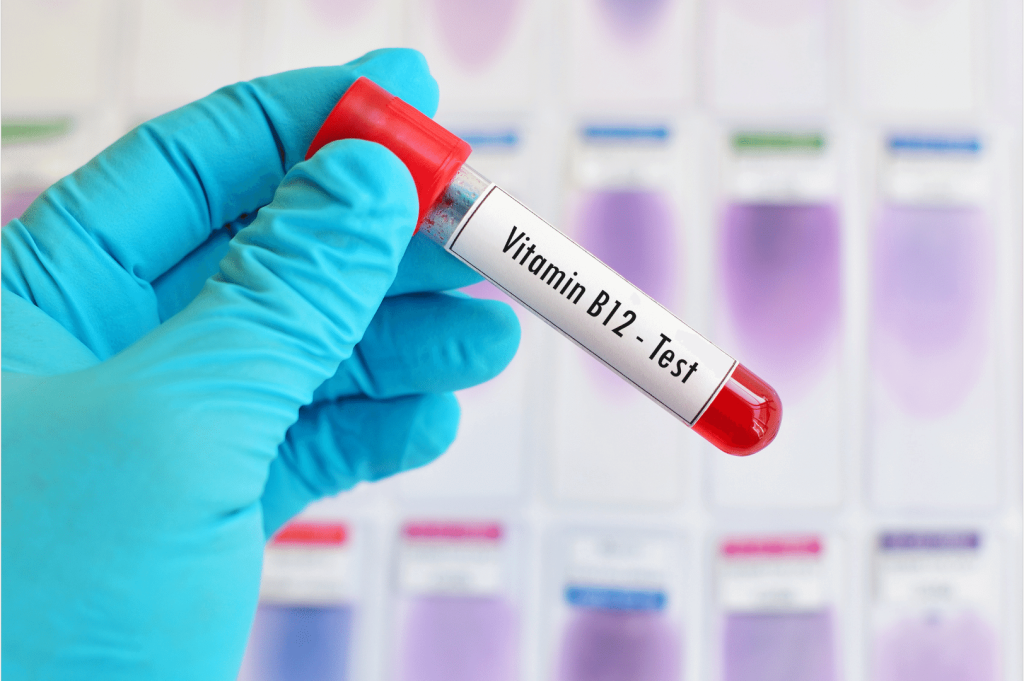
Pros And Cons Of a Raw Food Diet


Pros And Cons Of a Raw Food Diet
Many raw food eaters are also highly spiritual. This makes the diet a great choice for short-term detox purposes. However, in the long term, there are many potential health risks.
Our co-founder and president, Wade T Lightheart, was a raw vegan for 2 years before realizing that it’s tough to maintain when he lived in a cold climate.
What Is A Raw Food Diet?
Essentially you avoid all cooked food. It was first documented in the late 1800s when a doctor discovered that he could cure jaundice with an apple.
The diet didn’t become popular until Dr. Edward Howell M.D. popularized the idea that enzymes and life force from food are important for health. He started a facility that treated patients with the raw food diet. When food isn’t heated past 114 degrees (give or take), all of the enzymes in the food are still active. This allows you to maximize your digestive capabilities.

According to Dr. Howell, enzymes are a critical component to life– they’re the bioworkers that make over 25,000 functions in the body happen. Howell hypothesized that everyone has an enzyme bank account or reserve that can be depleted or replenished.
Eating mostly cooked foods drains more of your own enzyme bank account, which can lead to enzyme depletion and eventually diseases. Therefore, he uses the raw food diet, especially with high-enzyme produce, to treat diseases.
Some of Dr. Howell’s claims have been disproven with better understanding of biology. However, based on our personal and professional experience, we believe the diet can still be a powerful nutritional strategy if implemented correctly.
The raw food community is one of the most intense dietary tribes. They usually hold strong spiritual beliefs and they often frown upon dietary supplements or anything even remotely artificial.
They can also be one of the most dogmatic. At a raw food festival, one of the waif-like characters with glazed eyes looked at Wade and asked, “What percentage of raw are you?” Wade could tell that if his answer wasn’t 100% raw, he’d be thrown out of the tribe and exiled for all eternity.
Similar to many other restrictive diets, people became evangelists after the diet cures their or their loved one’s serious health conditions. As with many diets we’ve covered, it is a strong antidote to the modern Standard American Diet which can explain why it restored their health.
Now, let’s talk about the pros and cons of a raw food diet.
Pros of the raw food diet
1. May Reverse Modern Chronic Diseases
Many raw food cultists got into it because the raw food diet cured their chronic health conditions or they started to feel amazing when they started the diet.
The raw food diet is rich in nutrients, life force, and enzymes that are lacking in the Standard American Diet and most bodybuilding diets. As a result, many people see improvements in their health markers, and some even reverse their illnesses.
We believe that the core reason raw food diets have helped many with their health is because it’s often low in calories and protein. This can help decrease IGF-1 and increase autophagy. The body can then heal itself of various ailments.
For some, the raw food diet also has big spiritual and tribal components, which can have some health benefits. Research has shown that having spiritual beliefs makes the immune system stronger.
However, the spiritual and tribal components can also cause people to turn a blind eye to obvious health problems that arise later on due to nutrient deficiencies.
2. Improved Energy And Vitality
The raw food diet may be lower in toxins that interfere with mitochondrial energy production. In addition, the plant-based antioxidants neutralize oxidative stress that jams the mitochondria. The diet is also high in vitamins, minerals, and life force that other diets lack.
If you eat significantly more green vegetables or algae, you’ll also get a lot of B vitamins and chlorophyll that support the mitochondria.Therefore, most people feel more energized at least in the beginning phases of the raw food diet.
3. Improving Digestion
Almost across the board, raw foodists experience improved digestion on a raw food diet. Possibly, the higher enzyme and probiotic content of the meals support digestion. Also, the diet tends to be significantly lower in fat and proteins, thus requiring less energy to digest.
4. Enhancing Sensory Perception From Food
Many raw foodists become more acutely aware of how foods affect their bodies. Wade noticed a dramatic increase in his sensory perceptions. His palate changed along with his sense of smell and awareness of how food affected him. He started being able to taste it if the food contained any pesticides or unhealthy chemicals, or if certain foods disrupted his digestion or sleep.

5. Detoxification
Raw foodists claim that the raw food diet improves health by detoxifying the body, possibly due to the increased fiber, antioxidants, and micronutrient levels.
In Chinese and Ayurvedic medicine, anger is a sign of liver congestion. Wade notices he became a lot less angry.
6. May Help With Weight Loss
With the diet being so restrictive, many people end up consuming significantly fewer calories. Raw vegan diets are naturally low in fats and protein.
The higher fiber and polyphenol content may also promote the lean microbiome, which are higher in bacteroidetes and lower in firmicutes.
However, it is still possible to overeat the dehydrated nuts and treats. Many of the packaged ones are hyper-palatable with high-fructose sweeteners, crunch, and salt.
Cons and Health Risks On A Raw Food Diet
The biggest risk with a raw food diet and why we typically don’t advise anyone to follow it for more than a few months is deficiencies. Due to the restrictive nature of the diet, it’s easy to develop multiple nutrient deficiencies that can impact your health.
We are not saying this is the case for everyone. If someone does it intelligently and focuses on making sure they feed their bodies the following key nutrients, then it can be possible. Matt’s friend and legendary raw food master, Dr. Lathan has been raw for 37 years. He’s in his 70s and one of the most vibrant men you’ll ever meet.
1. Amino Acid/Protein Deficiencies
Amino acid deficiency causes a number of disease states, nutritional deficiencies, fatigue, accelerated aging, and even premature death.
Raw vegan diet tends to avoid grains and legumes, so it can be difficult to get enough protein. Also, a lot of plant-based proteins are less bioavailable than animal-based proteins.
As a result, most raw foodists lose on average 15-20 lbs of lean muscle in 3-6 months on a raw food diet, even with weight training. They are lacking the amino acids needed to build muscle.
Although Wade felt great on the raw food diet, he needed to supplement with a plant-based protein powder so that he could train hard, maintain muscle mass, and recover from his workout.

PowerMove: Optimize Your Raw Plant Protein Intake
Here are the 12 of the best raw plant-based protein sources:
- Spirulina: 57 grams of protein per 100 grams
- Hemp seeds: 31.5 grams of protein per 100 grams
- Pumpkin seeds: 25 grams of protein per 100 grams
- Chickpea sprouts: 25.7 grams of protein per 100 grams
- Adzuki bean sprouts: 23 grams of protein per 100 grams
- Sunflower seeds: 22 grams of protein per 100 grams
- Flax seeds: 18.3 grams of protein per 100 grams
- Lentil sprouts: 8.5 grams of protein per 100 grams
- Pea sprouts: 9.1 grams of protein per 100 grams
- Sprouted mung beans: 7 grams of protein per 100 grams
- Alfalfa sprouts: 4 grams of protein per 100 grams
- Spinach: 2.9 grams of protein per 100g
Many plant-based proteins, such as lectins, are more difficult to digest due to their chemical structures. To improve protein bioavailability on any plant-based diet, Wade recommends supplementing with a full-spectrum digestive enzyme like MassZymes and VegZymes. MassZymes is the strongest proteolytic digestive enzyme on the market. VegZymes is designed to optimize plant digestion.
- Fat Soluble Vitamin deficiencies
The nutrients that are generally non-existent on the raw vegan diet and may require supplementation include:
- Long-chain omega-3 fatty acids, such as EPA and DHA, which are important for the brain and balancing inflammation levels. Many people, especially men, are very bad at converting short-chain omega-3, such as ALA, into the long-chain ones. Algae is the best source.
- Preformed vitamin A, such as retinol and retinoic acid, is only found in animal products. Vitamin A is important for mucosal and tissue barrier function, such as the skin and the gut. It’s also important for many hormones, such as thyroid and vitamin D, to function correctly.
- Vitamin D is critical for all aspects of health, especially hormones, immune, and metabolic functions. You may get it from the sun, but most people in the temperate climates need to supplement during the colder months.
These nutrient deficiencies, along with lack of amino acid, may explain the high rates of mental health issues among long-term raw vegans. Vitamin B12 is another common deficiency for raw vegan followers because it’s not available in plants.
Genetics may also play a role here (See Chapter X). The people who have the vegan genes and can healthily stay on the diet without supplementing are genetically more efficient at converting short-chain into long-chain omega-3, and beta-carotene into retinol. We recommend supplementing with these on a raw food diet.
PowerMove: Optimize Your Fats
Here are the top EFA options for vegetarians and vegans:
- Algal oil (derived from algae) – has 500 mg of EFAs per dose: Perilla oil (derived from perilla seeds) – has 9,000 mg of ALA omega 3 per TBSP
- Flaxseeds – have an epic 6,388 mg of ALA Omega 3s per ounce: Hemp seeds – have a whopping 6,000 mg of ALA Omega 3s per ounce
- Chia seeds – have a 4,915 mg of ALA Omega 3s per ounce: Brussels sprouts – come in at over 125 mg of EFAs per half cup
- Walnuts – have 2,542 mg of ALA Omega 3s per ounce
A few foods have come up in BOTH PowerMoves for protein and fats: spirulina, flax seeds and hemp seeds. These should be staple foods on a raw food diet
3. High In Anti-Nutrients And Gut Irritants
Although raw food preparations take great care to soak and sprout foods, you may still end up eating a lot of anti-nutrients and gut irritants such as:
- Oxalates
- Alkaloids
- Saponins
- Salicylates
- Phytates
- Protease inhibitors
- Lectins.
Review the food sensitivities chapter to learn more.
PowerMove: Soak Your Nuts
Most nuts and many vegetables have enzyme inhibitors, lectins and other potential gut health disruptors. One of the ways to counter this is to learn how to soak your nuts:
| Nuts and Seeds | Soaking Time |
| Almonds | 10-12 hours |
| Brazil Nuts | Avoid soaking |
| Cashews | 2-3 hours |
| Flax Seeds | Avoid soaking |
| Hazelnuts | 10-12 hours |
| Hemp Seeds | Avoid soaking |
| Macadamia Nuts | 2-hours |
| Pecans | Avoid soaking |
| Pine Nuts | Don’t Soak |
| Pistachio Nuts | 6-8 hours |
| Pumpkin Seeds (Hulled) | 8 hours |
| Sesame Seeds | 8 hours |
| Sunflower Seeds (Hulled) | 2 hours |
| Walnuts | 6-8 hours |
4. Too Few Calories
The raw food diet can be low in calorie density because it’s higher in fiber, so it’s very easy to eat too few calories on this diet. Also, cooking allows your body to extract more energy from food.
Therefore, the raw food diet can lead to severe under-nutrition, which can lead to fatigue, hormone imbalances, and weight loss. If you’re struggling with eating enough on a raw food diet, pay attention to the next PowerMove.
PowerMove: The Easy Way To Add More Calories
The easiest way to add more calories to a raw food diet is to focus on fats. Here are some of the best high fat, raw options:
- Cold pressed olive oil and olives
- Nut butters
- Avocado
- Nuts and Seeds:
- Almonds
- Brazil Nuts
- Cashews
- Flax Seeds
- Hazelnuts
- Hemp Seeds
- Macadamia Nuts
- Pecans
- Pine Nuts
- Pistachio Nuts
- Pumpkin Seeds (Hulled)
- Sesame Seeds
- Sunflower Seeds (Hulled)
- Walnuts
Conclusion
The raw food diet can be a very beneficial reprieve from the Standard American Diet. Many people feel better and more energized on this diet. But in the long term, you risk many nutrient deficiencies and unhealthy muscle loss. So, we don’t recommend the raw food diet for longer than a few months at a time. However, if you choose to be a raw food eater, there are supplements and food preparation tips that can ensure optimal nutrient intake and overall health.
References
- Woods TE, Antoni MH, Ironson GH, Kling DW. Religiosity is associated with affective and immune status in symptomatic HIV-infected gay men. J Psychosom Res. 1999;46(2):165-176. doi:10.1016/s0022-3999(98)00078-6
- Xu C, Zhang J, Mihai DM, Washington I. Light-harvesting chlorophyll pigments enable mammalian mitochondria to capture photonic energy and produce ATP. J Cell Sci. 2014;127(Pt 2):388-399. doi:10.1242/jcs.134262
- Ichord RN, Bearden DR. Perinatal Metabolic Encephalopathie. In: Swaiman’s Pediatric Neurology,. Elsevier; 2017:e411-e431.
- Groopman EE, Carmody RN, Wrangham RW. Cooking increases net energy gain from a lipid-rich food: Energy Gain from Cooked Lipids. Am J Phys Anthropol. 2015;156(1):11-18. doi:10.1002/ajpa.22622
